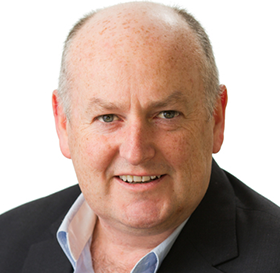People still work at heights, interact with moving equipment, and manage hazardous substances.
 In today’s fast-paced business environment, managers are under constant pressure to deliver results. Productivity targets are tight, cost pressures loom large, and operational demands rarely ease up. Yet, the risks in your operations haven’t fundamentally changed. People still work at heights, interact with moving equipment, and manage hazardous substances. Safety remains a non-negotiable, ever-present reality.
In today’s fast-paced business environment, managers are under constant pressure to deliver results. Productivity targets are tight, cost pressures loom large, and operational demands rarely ease up. Yet, the risks in your operations haven’t fundamentally changed. People still work at heights, interact with moving equipment, and manage hazardous substances. Safety remains a non-negotiable, ever-present reality.
But something else is changing around you—and fast. Information is everywhere. Got a safety question? A quick search or an AI tool like ChatGPT can give you an answer in seconds. Need a risk assessment template? Download it online for free. Policies, procedures, hazard checklists—all available with a few clicks.
It’s natural to wonder: “Do we still need safety professionals? Couldn’t we just access this knowledge ourselves?”
It’s a fair question. But let’s unpack what a great safety professional actually does—and why they are more important than ever in this information-rich age.
Knowledge vs. Understanding
ChatGPT can certainly tell you what ISO45001 says about leadership in safety. It can explain what “SFAIRP” means in risk management. But it can’t walk your floor and see the wear on that aging conveyor guard. It won’t pick up on the subtle discomfort in a supervisor’s voice when they talk about their team being stretched thin. It doesn’t know that your maintenance crew often has to improvise because the right tools aren’t always available.
Safety consultant professionals bridge the gap between theoretical knowledge and the gritty, real-world complexities of your business. They understand that while policies and procedures matter, what truly keeps people safe is ensuring those systems actually work for your people on the ground.
Work as Imagined vs. Work as Done
As a manager, you might expect work to happen a certain way. Tasks should be performed according to the procedure. PPE should always be worn. Safety controls should function flawlessly. But experienced managers also know that reality often differs. Tight schedules, equipment breakdowns, and human ingenuity lead to adaptations and workarounds.
A skilled safety professional spends time understanding “work as done.” They walk the job site, ask curious questions, and create a climate where workers feel safe to share the truth about their daily challenges. This isn’t about catching people out; it’s about understanding the pressures they face and ensuring your controls are robust enough to account for the realities of work.
Coaching Leaders, Not Policing Workers
Forget the old-school image of the clipboard-wielding safety officer issuing warnings. Today’s best safety professionals are coaches. They work with your frontline leaders, helping supervisors balance production demands with safe practices. They build the capability of your team to make better safety decisions under pressure. They know that real safety isn’t achieved through compliance alone; it’s achieved when your people feel supported and empowered to raise concerns and stop unsafe work.
Human-Centred Safety
A recent shift in safety science emphasises supporting people to succeed rather than focusing solely on preventing them from failing. Your workforce is skilled and experienced. They are the solution, not the problem. Safety professionals trained in Safety Differently and Human and Organisational Performance (HOP) help you harness your team's expertise. They create systems that support adaptability while preserving critical safeguards.
Measuring Safety Beyond Injury Rates
Managers often rely on injury rates as a gauge of safety performance. It’s understandable—these numbers are easy to track. But they don’t tell the whole story. You can have low incident rates while being one near-miss away from catastrophe. Conversely, reporting more incidents can sometimes mean your culture is improving, as people feel safer to speak up.
Safety professionals help you measure what really matters: the quality of your controls, the effectiveness of your training, the strength of your safety culture, and how well your organisation learns from both success and failure.
The Role of Technology (Including ChatGPT)
Embracing tools like ChatGPT can absolutely enhance safety. It can assist with drafting documents, providing quick explanations, and even generating safety checklists. But technology is a tool—not a replacement for professional judgment, relationship-building, and operational insight.
Don't trust AI's legislative references - that's for sure! Hallucinations can be interpreted as innovative and creative, but legal compliance - no!
Think of it like this: You wouldn’t eliminate your financial controller just because accounting software exists. You rely on their expertise to interpret the numbers, anticipate risks, and guide your financial strategy. Safety is no different. Your safety professional interprets the data, sees the patterns, and ensures your controls work when it matters most.
Your Key Takeaway as a Manager
The future of safety is not about choosing between a safety professional or technology. It’s about having both. Your safety professional is your operational ally—helping you navigate complexity, support your team, and ensure your business succeeds without compromising the safety of your people.
So next time you find yourself questioning whether you need a safety professional when ChatGPT can “do it all,” remember: Technology can give you information. A great safety professional helps you turn that information into action, keeping your people safe while enabling your business to thrive.
That’s a future worth investing in.


